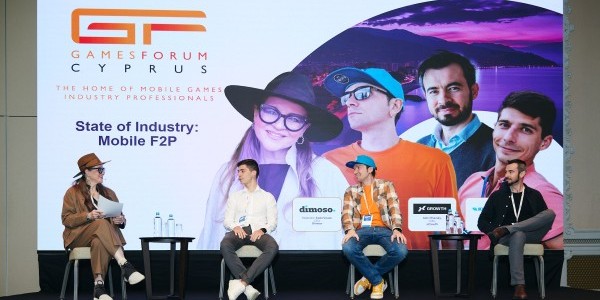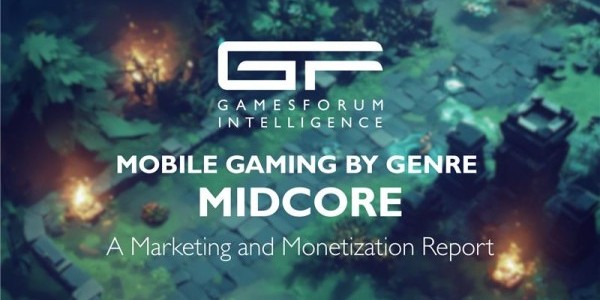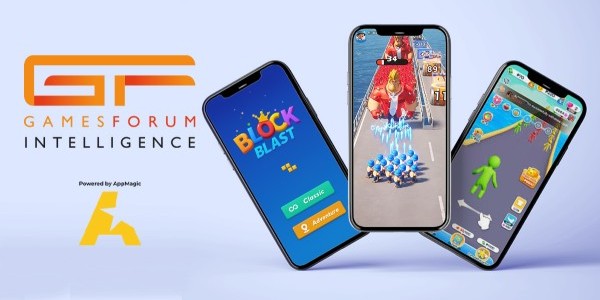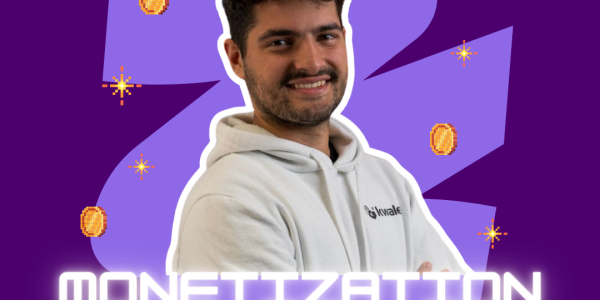The Long and Winding Road to Success for Among Us

By Andi Nuruljihad for Gamesforum
It feels like Among Us took over the world in a night. In less than a year, it went from a concurrent player peak of fewer than 200 people on Steam to the most streamed video game on Twitch for the month of September. But back in 2018 when Among Us first launched, developers InnerSloth were happy if anyone was playing at all.
Personality, Subterfuge, Logic -- in that order.
Among Us is a faster-paced, more streamlined version of the classic social deduction party game, Mafia.
In Among Us, 4-10 players must work together to repair the damaged components on their spaceship before it explodes. However, there are alien Impostors among your crewmates who want to bring your space mission to a violent end. They can achieve this by sabotaging the ship’s equipment or committing murder outright. Crewmates must keep their ship in working condition while working out the identities of the saboteurs before time runs out or the Impostors kill them all.
Players can interrupt the regular flow of gameplay by calling an Emergency Meeting or reporting a dead body. Then, all surviving crew members are given time to discuss with one another before voting on a player to unceremoniously expel from their space boat. It’s here where the real game begins. Arguments break out, harsh words are spoken, and feelings are hurt as the Crewmates desperately try to deduce who the Impostors are. Meanwhile, the Impostors must sidestep accusations and manipulate other players to shift the blame on an innocent Crewmate.
Versions of Mafia have existed on the internet for years now, but none have achieved the same mass appeal as Among Us. Town of Salem and Werewolves Within simply recreate the campfire format of the real-world original -- gameplay is reduced to a chat box and killings take place off-screen. Among Us succeeds where those games haven’t by reducing the logical deduction element of Mafia and doubling down on the emotional aspect.
It doesn’t matter if you’re eye witness to a cold-blooded killing if you can’t convince your Crewmates that you know who the Impostor is. Whether you’re a Crewmate or an Impostor, it’s the ability to direct conversations or stir up drama that wins games. This is also what makes Among Us such a great title for streaming -- streamers’ personalities can take center stage, opening up opportunities for cross-promotion and collaboration between channels.
Going Viral Three Times
Designed to bring the drama and intrigue of Mafia to a mobile party game setting, Among Us was originally local multiplayer only. In an interview with Escapist Magazine, programmer Forest Willard admitted that not long after its initial launch, InnerSloth was ready to move on: “We made that and we released it, and there was definitely a point where we were like, ‘That’s it. We’re done. We’re gonna move on to the next game.’” A month later, InnerSloth had online multiplayer up and running.
This would become a recurring theme throughout Among Us’ development -- features and new items would be implemented, the game would be “complete”, then renewed interest would inspire further development. InnerSloth would only continue supporting their game due to multiple waves of varying levels of “viralness.” Artist and designer Marcus Bromander to Escapist Magazine: “I feel like every time we saw big waves of players, that pushed us to get excited and want to do more with it.”
Even as the game grew, InnerSloth never dreamed their funky, space-themed Mafia variant would take off the way it did. But while the media has focused on its sudden explosion into wider internet culture, Among Us was a hit in non-English territories long before American and European streamers picked it up. Willard shared the story of the game’s development in a long series of posts on Twitter.
Korea was the first region to blow up. In a Twitter post, Willard describes Korea’s importance to the growth of Among Us, “Our first audience was Korea, and they still constitute 50% of our Steam Among Us sales. That all started in Dec 2018 with Kevin Choi.”
In early 2019, Among Us appeared to have run its course. InnerSloth was winding development down (again) and prepared to accept that Among Us was never going to be profitable when Brazilian YouTuber Godenot discovered the game on the Google Play Store. He introduced the title to his fanbase of more than 3 million subscribers and InnerSloth found their second wind. By May of 2019, Among Us had been installed on more than 1 million Android phones.
When It All Popped Off
Up to this point, Among Us’ success was primarily limited to mobile, with the Google Play Store leading sales of in-app purchases. The game had also reached profitability and InnerSloth was considering finding a new project to work on.
It was UK-based streamer Kaif that brought Among Us to Europe and kick-started its rise on the PC. At the start of 2020, InnerSloth had (once again) deemed Among Us a completed project. In a blog post in January, InnerSloth announced that they were ending development on the game. The servers would continue to run until 2021, but they couldn’t promise anything beyond that. Their players responded by quitting, and the blog post announcement was quickly followed by a drop off of players. Then, Kaif started streaming himself playing with his circle of friends, bringing in another new wave of fresh players in a market that the game had yet to penetrate, Europe.
Valve took notice in February of 2020 and reached out to InnerSloth for a Daily Deal. The game sold at a 50% discount for the month of February and gave the team a much-needed injection of promotion and sales. Willard describes the influx of new revenue driven by the Daily Deal: “If I remember rightly, each of those two days produced an entire month of sales, and left us with a higher baseline of sales after, as well as a boatload of wishlists. So that in turn made our Summer sale worthwhile - which snowballed into minor top seller visibility.” Development was back in full swing.
It’s important to note that by this point InnerSloth had already put in significant work upgrading and polishing Among Us to a state where it was ready for mass success, even if that was never their explicit goal. Over the course of two years, they fixed tons of bugs, implemented new maps, and added cosmetic items like hats and pets. When the 2020 Steam Summer Sale came around, the game’s server and performance issues had largely been stamped out. With some minor buzz from its Daily Deal and a significant 75% discount, it was the Summer Sale in June that put the title over the top.
By mid-July, English-speaking streamers on Twitch started picking up the game, driving massive sales. Then, Pluto, a staff member on the Partnerships team at Twitch caught wind of the game. Pluto casually recommended Among Us to Sodapoppin, who, after some toying about solo in front of his more than 10,000 followers, invited his streamer pals to join in on a few rounds on stream. The rest is history.
Monetisation Model
Among Us is available on PC and mobile. On mobile, the game is free-to-play with ads and in-app purchases. Players can spend their money on in-game cosmetics to dress their spacemen up in silly hats and suits. The PC version can be bought on Steam or itch.io for $5 and contains no ads, though cosmetics bundles can be purchased separately.
According to Sensor Tower, the mobile version of Among Us has generated $3.2 million dollars from in-app purchases since its release in 2018. While certainly nothing to scoff at, especially for a three-man development team, that’s quite a modest figure for a game that has been downloaded over 100 million times on the Google Play Store.
On PC, Among Us is making big bucks despite the comparatively small player base. SteamSpy estimates there are more than 10 million owners of Among Us on Steam alone. That’s a decent chunk of change even after the significant cut Valve takes from every sale (20-30% based on sales revenue).
Nipping Their Sequel in the Bud
On August 18, InnerSloth announced a sequel to Among Us but canned development shortly afterward. Perhaps aware they weren’t likely to catch lightning in a bottle twice, InnerSloth has shifted focus to improving the codebase and player experience of their current hit game.
There are major risks to releasing a sequel, especially so soon after a game’s peak. You risk fragmenting your audience, splitting them between your titles. You also take on the added burden of supporting more games, something a small studio like InnerSloth likely isn’t prepared for. Considering their original plans to start the project from scratch with a brand-new codebase, development on Among Us 2 would have taken time and resources away from Among Us. In that period, any perceived lack of interest from the developer due to a slowing down of updates or communication could result in a player dropoff.
How Far Can Among Us Go?
It’s natural to compare Among Us to another recent viral hit, Fall Guys: Ultimate Knockout. Like Among Us, Fall Guys came seemingly out of nowhere, and then it was everywhere. Memes, webcomics, YouTube videos, Twitch streams -- creators were pumping out Fall Guys content at full steam. Then, Among Us hit and Fall Guys was gone again.
Viral sensations come and go. You can’t build a sustained model on a month of fleeting success -- and history shows you only really get about a month. It only took 28 days for 2014’s Flappy Bird, the first real hyper-casual success, to hit peak pop-culture penetration and disappear into irrelevance. Fall Guys drop in viewers may coincide with the rise of Among Us, but viewer and channel data from TwitchTracker indicates the game was already on its way out before Among Us stole the limelight.

Average daily viewer counts of Fall Guys shows that interest had been trending downwards for weeks prior to Among Us’ September explosion
So, where does that put Among Us in a month’s time? Well, it’s a bit early to know for sure, but data from TwitchTracker for Among Us’ performance in the past week indicates a steady drop in viewer and streamer interest.
 Twitch Among Us Viewer Count
Twitch Among Us Viewer CountA game’s success on YouTube and Twitch isn’t the only metric for measuring its long-term viability. Case in point: Overcooked continues to see year-on-year revenue growth despite getting almost no love on the major video streaming platforms. And how many people do you know that stream Coin Masters?
For a more complete picture of its performance, let’s take a look at its Steam numbers.
 Numbers of Steam Players of Among Us
Numbers of Steam Players of Among UsIt’s interesting to note that the drop in livestream viewers isn’t reflected in the game’s Steam player base -- at least, not yet. However, Among Us’ time in the spotlight looks to be coming to an end. Without the free promotion provided by streamers and their channels, we can expect a drop in install rate and eventually concurrent player numbers. It will be interesting to see where the average player count settles once the hype has died down.
The next few months will be busy for InnerSloth -- aside from the restructuring of Among Us’ codebase, they’ve also promised a new stage, server fixes, and the much-requested support for Friends Lists. It’s up to InnerSloth now to develop their game into something that can maintain player interest in the foreseeable future.
For more Games Industry analysis, catch the Gamesforum Online webinar series, Wednesday's at 11am UK/ 9am EST and 9am PST










